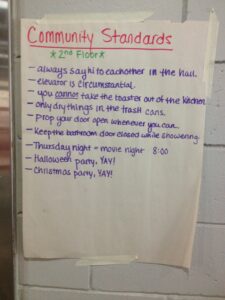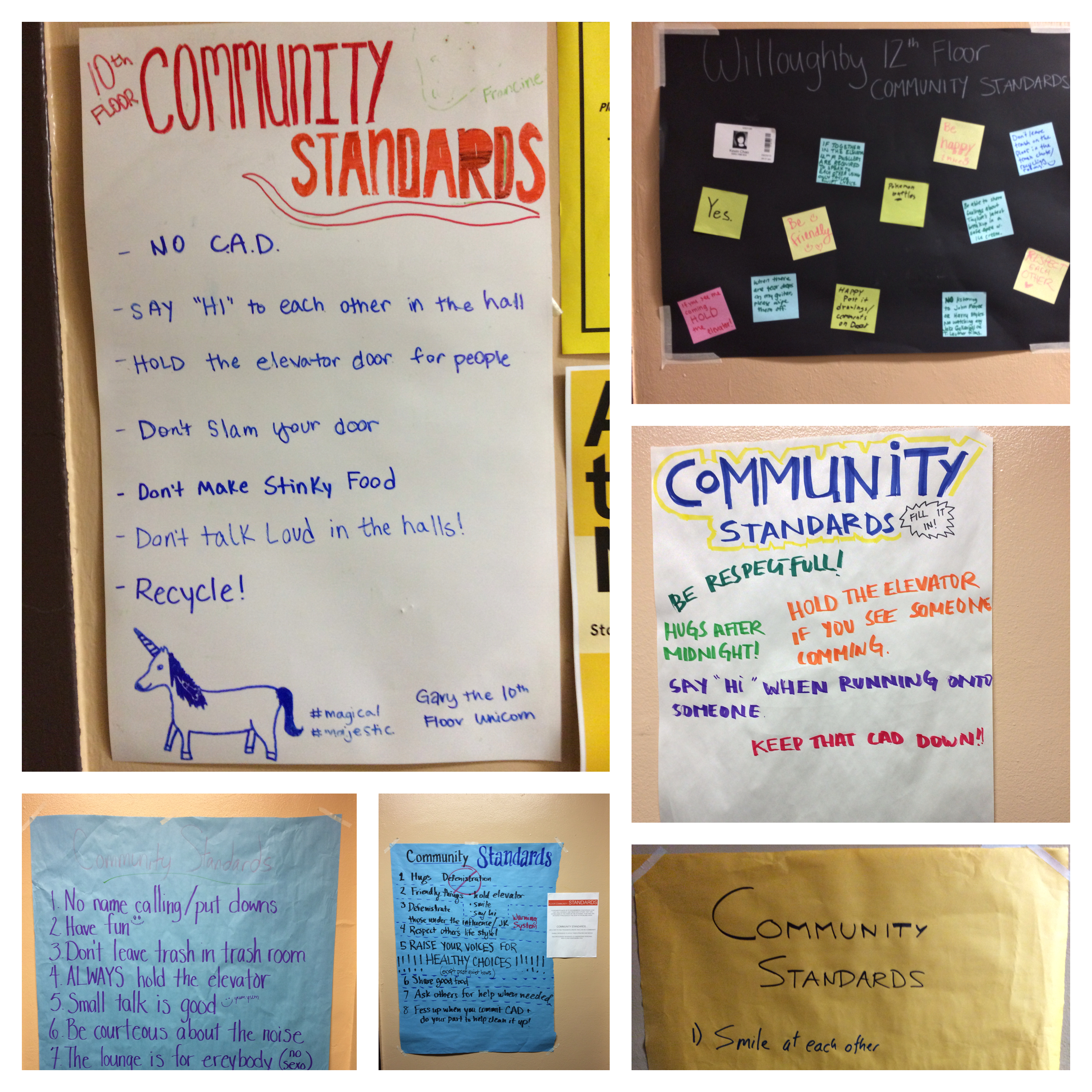Like roommate contracting, community standards are agreements made by floor members concerning how they will interact and treat each other. Floor community standards are established at the start of the academic year and are revisited throughout the year and as problems arise. The goals of floor community standards are to:
- Help residents create and live in a community.
- Enable residents to voice their opinions and needs.
- Encourage residents to understand personal rights and responsibilities in the context of a community.
The Floor Community Standards process creates an environment conducive to learning; it:
- Gives decision-making experience
- Creates an authority that helps students fix their own problems instead of fixing them for the student
- Allows recognition that behavior impacts others, and people have different expectations about behavior
- Empowers students to have a voice in their experience and that they must take the responsibility to participate in order to have their needs met
Floor Community Standards most often focus on issues of respect, courtesy and personal responsibility. They do not replace health and safety and law-based policies.



“Floor Standards are the agreements made by the floor residents concerning how residents will relate to and treat each other . . . While Floor Standards can be seen as a product—a list of agreements, Floor Standards is a process by which individuals begin forming a community through dialogue, compromise and commitment. Floor Standards evolve, and therefore the Floor Standards process is never finished. Because Floor Standards evolve, they should not be thought of as a task to be completed, but as a means by which community interactions occur”
Office of Campus Housing, University of Nevada, Las Vegas